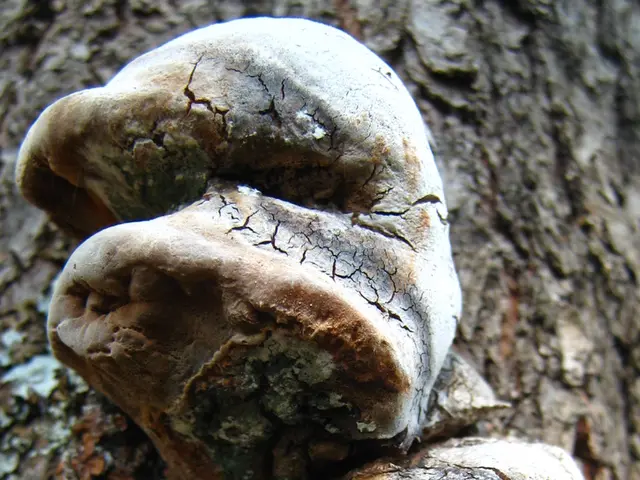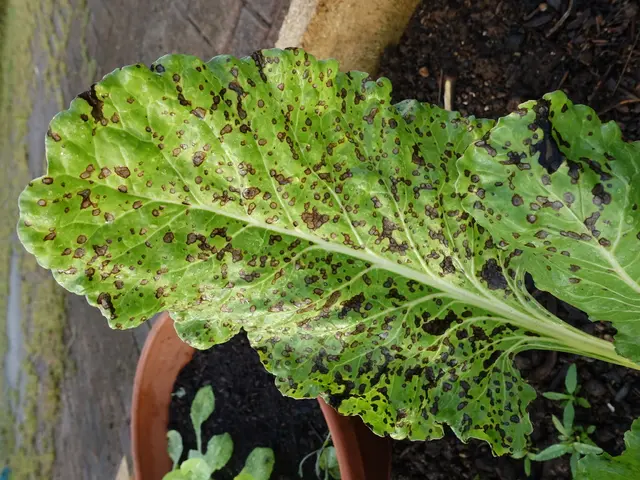Ideal Soil Compositions for Inch Plants to Flourish
Inch plants, also known as Tradescantia or wandering dude, are easy to care for and add a splash of colour to both indoor and outdoor spaces. With their adaptable nature, these plants thrive in various soil conditions. Here's a guide to creating the perfect soil mix, potting mixes, and soil amendments for your inch plants.
**Soil Types**
Originating from dry clay, rock, or sand prairies in the Midwest and Great Plains, inch plants are adaptable to various garden soils, including heavy alkaline clay, rocky soils, and sand prairies. Outdoors, moist but well-drained soils ranging from acidic to alkaline pH are suitable, including loam and sandy soils.
**Potting Mixes**
A well-draining, aerated potting mix is essential to avoid soggy soil, which can cause root rot. A recommended potting mix ratio for houseplants similar to inch plants is:
- 2 parts potting soil - 2 parts peat moss or coconut coir - 1 part vermiculite - 1 part perlite
This mix ensures moisture retention balanced with drainage and aeration, critical for healthy root systems. For indoor growing, using a peat-free, loam-based potting compost with good drainage is advised.
**Soil Amendments**
Incorporating organic matter can increase fertility and moisture retention without compromising drainage. Adding perlite or vermiculite helps improve soil aeration and drainage, preventing waterlogging. In garden settings, mulch can be applied to retain soil moisture, suppress weeds, and regulate temperature, creating an optimal root environment.
**Summary for Best Results**
To ensure inch plants thrive with healthy root growth, resistance to root rot, and adaptability across varied soil conditions, consider the following:
- Adaptable soil types: heavy clay, alkaline, loam, sandy, rocky - Moderately moist, well-drained to moderately dry soil - A mix of potting soil, peat moss or coconut coir, perlite, vermiculite - Essential drainage; pots must have drainage holes - Organic matter, perlite/vermiculite, mulch outdoors
By following these guidelines, inch plants will flourish, adding a touch of green to any space. When using an all-purpose potting soil, it is important to consider the specific needs of inch plants, such as well-drained soil with a mix of potting soil and perlite or coarse sand.
Remember to test soil moisture by sticking your finger into the soil up to your first knuckle to determine when to water. Inch plants also benefit from a balanced, water-soluble fertilizer once a month during the growing season.
Sources: [1] The Spruce, "Inch Plant Care: How to Grow and Care for Tradescantia," accessed 2023-03-17 [2] Gardening Know How, "How to Care for Inch Plant," accessed 2023-03-17 [3] The Gardener's World, "Inch Plant (Tradescantia) Care," accessed 2023-03-17 [4] The Old Farmer's Almanac, "Mulch," accessed 2023-03-17 [5] HGTV, "The Ultimate Guide to Houseplants: Inch Plant," accessed 2023-03-17
- Caring for inch plants can not only enhance the visual appeal of your home-and-garden, but also contribute to your lifestyle by adding bursts of color indoors and outdoors.
- To create a healthy environment for your inch plants, focus on a well-draining potting mix (consisting of two parts potting soil, two parts peat moss or coconut coir, one part vermiculite, and one part perlite), suitable soil conditions (moderately moist, well-drained to moderately dry soil), and organic matter or soil amendments (such as perlite, vermiculite, or mulch in garden settings) to maintain soil fertility, moisture retention, and aeration.








